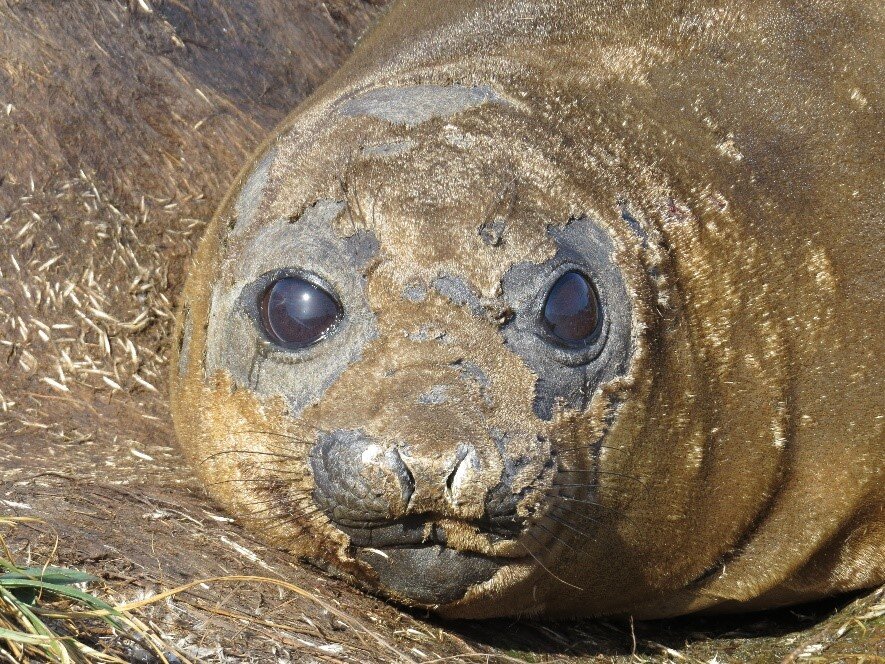NEW PAPER: Moult as related to age and breeding state of female southern elephant seals
/Southern elephant seal on marion Island starting to moult around its face. Photo credit: Leandri de Kock
Between November and February each year, southern elephant seals haul out ashore to undergo a ‘catastrophic’ moult whereby they shed hair and layers of skin while fasting.
In the latest MIMMP paper by Leandri de Kock and colleagues, moult scores from 4612 female southern elephant seals (over 32 years) were used to quantify moult timing (phenology) and haulout duration (the time from arrival ashore to departure) at Marion Island. This is the most comprehensive study of female southern elephant seal moult haulout to date, both in the number of animals investigated and the time-frame of data collection.
In the article published recently in Scientific Reports, no clear phenological shifts were observed in either moult timing or haulout duration over the 32-year study period. Moult timing was strongly influenced by age, with juveniles initiating moult progressively later in the season as they aged until reaching adulthood (4 years and older) when annual start dates become fairly consistent over time. In contrast, moult haulout duration was not constant among adults and instead showed a decreasing trend with age. On average, the study found that female elephant seals hauled out to moult for 31,25 days each year.
Figure from de Kock et al. 2021. A) Mean moult haulout duration (with 95% confidence intervals) of female southern elephant seals at Marion Island according to age and breeding state. B) Observed mean (black circles) and predicted change (linear regression) in moult haulout duration of female elephant seals with variation in sea surface temperature (SST) and a linear regression (with 95% confidence intervals). Individual data points are plotted on both figures (pink – juveniles, green – non-breeding adults and blue – breeding adults).
Interestingly, moult haulout duration and timing were largely unaffected by climatic and oceanographic metrics of the Southern Ocean surrounding Marion Island.
Moult in elephant seals is energetically demanding and differences in moult haulout duration for females of different ages could be explained by individual variations in body mass, although other drivers such as hormones cannot be discounted. Given the ease of monitoring annual changes in moult haulout duration compared to changes in body mass, future studies are encouraged to investigate whether moult haulout duration can act as a proxy of body mass (condition) for female elephant seals.
Such long-term individual-based studies enjoy clear advantages over population-level data, by being able to account for age and linkages between life-history stages. Such information for moult timing and haulout duration is likely to be useful as auxiliary data in life-history theory models.
Well done to Leandri and colleagues for this exciting work!
Read the full article HERE



















